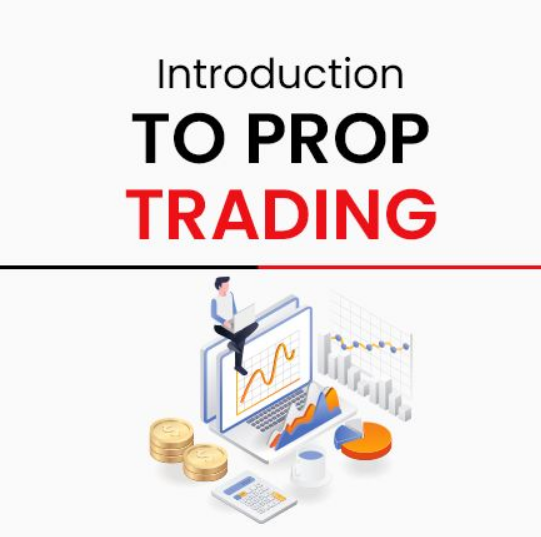Prop Trading Qualifications: Expert Insights for Aspiring Prop Traders
Proprietary trading has evolved into an arena where expertise, rigorous qualification processes, and sophisticated strategies dictate success. In this detailed guide, we explore the essential prop trading qualifications, discuss state-of-the-art backtesting methodologies, and offer deep tool comparisons to help traders and firm managers make data-driven, informed decisions.
Understanding Prop Trading Qualifications
Prop trading qualifications extend beyond basic trading skills. They include advanced certifications, strict risk management protocols, and real-world strategy performance metrics. Today’s prop trading professionals must balance regulatory compliance with innovative trading techniques. In this article, we delve into the qualification requirements, advanced backtesting practices, and the tools that can empower traders at every level.

Figure 1: A screenshot of a backtesting tool interface showcasing live performance metrics and strategy optimization features.
Key Backtesting Concepts for Prop Traders
Backtesting remains a cornerstone for strategy development in prop trading. With advanced backtesting frameworks, traders can effectively scrutinize past market behavior and adjust strategies accordingly.
Common Pitfalls in Backtesting
- Overfitting: Relying too heavily on historical data can result in models that perform poorly on new data.
- Survivorship Bias: Using only successful historical data skewing the model’s reliability.
- Look-Ahead Bias: Incorrectly using future data points during model training.
- Data Snooping: Excessive testing on multiple hypotheses without adjusting for randomness.
Identifying and mitigating these pitfalls is crucial for maintaining a realistic simulation of expected returns. Expert practitioners now frequently incorporate walk-forward analysis and out-of-sample testing to further validate strategy robustness.
Walk-Forward Optimization vs. Traditional Backtesting
Traditional backtesting considers a fixed historical period, whereas walk-forward optimization continuously adjusts parameters using a rolling window. This approach actively tests model performance against evolving market conditions. Walk-forward analysis helps capture market dynamics and reduces the risk of overfitting.
Implementing Out-Of-Sample Testing
Out-of-sample testing allows traders to validate their models on unseen data. Once the backtest is complete, the portfolio can be simulated through forward testing (e.g., paper trading) before executing live trades. Commonly monitored metrics include:
- Sharpe Ratio: Aiming above 1.0 as a benchmark.
- Maximum Drawdown: Keeping drawdown limits within acceptable ranges, typically below 20%.
- Profit Factor: Striving for factors of 1.5 or above.
Comprehensive Tool Comparisons for Prop Trading Backtesting
Successful prop trading requires instrument-grade tools that automate the backtesting process, provide transparent performance reports, and streamline regulatory compliance. Below are detailed comparisons of widely recognized platforms:
| Tool | Backtesting Features | Data Quality | Integration Capabilities | Pricing & Use Cases |
|---|---|---|---|---|
| TradingView | Vectorized backtesting, automated alerts | Comprehensive historical data, various asset classes | API access, broker integrations | Free plans available, scalable for both retail and firm-level traders |
| MetaTrader 5 | Event-driven backtesting, multi-threaded optimization | Deep historical tick/bar data | Extensive API and broker integration options | Offers demo and live accounts; ideal for retail with firm-level applications |
| NinjaTrader | Automated parameter optimization, scenario analysis | Real-time and historical data feeds | Broker connectivity, third-party plugins | Flexible pricing tiers; suitable for prop firms and advanced individual traders |
| QuantConnect | Algorithmic trading backtesting across multiple asset classes | Robust data libraries with equities, forex, futures | API for custom integrations, cloud computing support | Subscription-based with free tiers; excellent for quants and teams |
| Trade Ideas | Automation in trading strategy simulations, advanced report generation | Live data feeds with historical archives | Direct broker integrations and external analytics tools | Premium pricing; best suited for experienced prop traders and institutional setups |
Risk Management and Regulatory Compliance in Prop Trading
Risk management is at the heart of successful prop trading. Firms adhere to strict regulatory frameworks such as MiFID II, ESMA regulations, and NFA rules to mitigate systemic risks. Advanced risk management strategies include automated drawdown monitoring and stress testing scenarios that factor in market shocks.
Advanced Backtesting Metrics
Prop firms often track multiple performance metrics:
- Sharpe Ratio: Indicates risk-adjusted returns; higher is generally better.
- Maximum Drawdown: Helps assess worst-case scenarios during volatile markets.
- Profit Factor: Ratio between total profits and total losses over the review period.
These metrics not only gauge strategy performance but also support compliance and risk management frameworks. By integrating these figures with automated risk controls, trading desks can maintain stability even under market stress.
Case Studies and Real-World Applications
Consider the case of a mid-sized prop firm that re-evaluated its strategies using NinjaTrader and QuantConnect. By deploying walk-forward optimization and robust out-of-sample testing protocols, the firm saw a 25% improvement in its Sharpe ratio and a significant reduction in drawdown from 30% to 15%. In another instance, a junior trader leveraged TradingView’s powerful visualization and backtesting interface to refine his approach, ultimately leading to a more data-driven, successful trading strategy.
Integrating Backtesting with Forward Testing
For both retail and institutional traders, the true test of a strategy is its performance in live market conditions. Before full live deployment, a thorough paper trading or simulated trading phase should be executed. This involves aligning backtesting metrics with real-time execution and monitoring the following:
- Execution speed and latency
- Risk parameters and stop loss mechanisms
- Real-time data integrity and consistency
Detailed Python examples using Backtrader may look like the snippet below:
import backtrader as bt
class TestStrategy(bt.Strategy):
def __init__(self):
self.sma = bt.indicators.SimpleMovingAverage(self.data.close, period=15)
def next(self):
if self.data.close[0] > self.sma[0]:
self.buy()
elif self.data.close[0] < self.sma[0]:
self.sell()
cerebro = bt.Cerebro()
# Add data and strategy
# ... (data loading code here)
cerebro.addstrategy(TestStrategy)
results = cerebro.run()
print('Final Portfolio Value:', cerebro.broker.getvalue())
This code demonstrates a simplified moving average crossover strategy, useful for understanding automated backtesting setup.

Figure 2: Prop trading risk management dashboard displaying key metrics such as drawdown, Sharpe Ratio, and live strategy performance.
Next Steps for Aspiring Prop Traders
Whether you’re a junior trader looking to break into prop trading or a seasoned quant aiming to optimize your strategy, understanding the qualifications and leveraging automated backtesting tools is crucial. Begin by honing your technical skills, familiarizing yourself with industry-leading platforms such as TradingView, MetaTrader 5, and QuantConnect, and adopting robust risk management practices.
For a more detailed checklist on prop trading qualifications and risk management practices, click here to access our Risk Management Checklist. Additionally, explore our article on Advanced Prop Trading Strategies for further insights.
As of October 2023, staying informed about regulatory updates and evolving market conditions is paramount. Regularly reviewing performance metrics, engaging with community insights, and participating in webinars or workshops can refine your trading edge.
Industry Insights
Leading propagators in the industry recommend combining historical backtests with real-time trial phases to align simulated results with live market realities. This balanced approach shields against common pitfalls and fosters continuous strategy improvement.
Ultimately, prop trading qualification is not just about meeting baseline requirements but about embracing a dynamic, data-informed evolution of strategies that stands up to the rigors of live trading environments. Empower yourself by leveraging these advanced practices and tools, and pave the way to a successful trading career.







